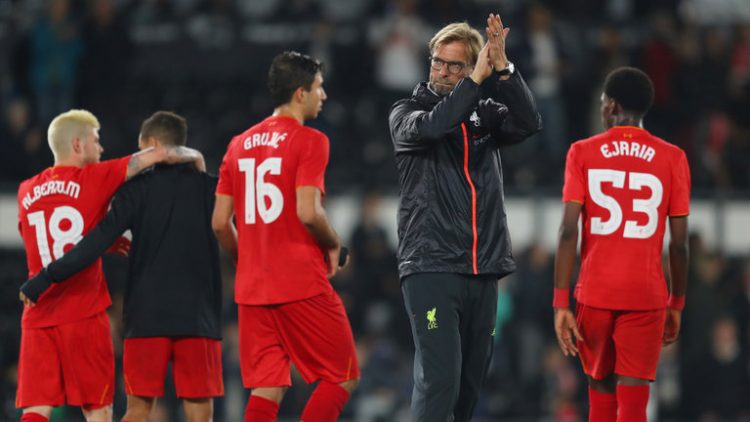Six games into the Premier League campaign, Liverpool are looking a whole lot better than some may have anticipated.
Multiple factors have proved key to their recent explosive form, most notably a host of individual performances on the pitch. While the likes of Adam Lallana, Sadio Mane and James Milner have thoroughly impressed the Anfield faithful, it must be noted that they have acclimatized to the philosophy and style of football propagated by manager Jürgen Klopp and that in turn has been viewed as the bedrock of the team’s recent endeavours. Klopp’s ‘Gegenpressing’ outlook has shaped the core of Liverpool’s performances this season, glimpses of which were highly encouraging last year.
So far this campaign, Liverpool’s only domestic blip has occurred at Burnley and although that was barely two weeks into the season, the outings that have followed have yielded a total of ten points out of a possible twelve. Performances have been identical in nature as compared to the previous year but what appears to have differentiated the side’s dynamism in attack this time around is the way they have lined up at the very beginning. Yes, Liverpool’s transition from a customary 4-2-3-1 set-up to a more expansive 4-3-3 has reaped rich rewards.
Both formations have their pros and cons but for a side eager to close its opponents down and integrate a fast tempo to the game, the latter seems more favourable. The fundamentals incorporated in this Liverpool team by Klopp include stretching the opposition to ridiculous lengths, passing the ball quickly and playing with incredible pace and power. Yet there are other aspects of lining up with a midfield trio that have proved beneficial to the Merseyside club, a few of which have been enumerated below:
1. Crowding the centre of the park:
It is often said that games are won by teams that win the midfield battle and this stands testament to Liverpool’s recent upsurge. The trio of Adam Lallana, Jordan Henderson and Georginio Wijnaldum has looked assured in the middle and it is the presence of an extra man that has allowed Lallana to venture forward with ease. Not only do they look well stocked while defending, they also break forward with more men in attack, thereby increasing the odds of creating something meaningful.
2. Forfeiting width:
This is where Liverpool are at their strongest. Placing two men either side of a central midfielder reduces the gaps available for opponents to exploit. Full-backs are afforded the license to charge forward without much hesitation and having players in close proximity to the opposition’s wingers prove vital in pinning down their system. To execute the same, it is essential for the midfield trio to be industrious and physically dominant in that area of the pitch and while it may not always bear fruit going forward, it is likely to extinguish any incoming attacks more often than not.
3. No player is left isolated:
It has been observed that with a 4-2-3-1 set-up, a team, likely to sit back and absorb pressure from the opposition runs and that results in a risk of leaving the lone forward isolated upfront. West Bromwich Albion are an ideal example in that regard as striker Salomon Rondon is often deprived of service due to his side’s ultra-defensive tactics. Playing with three forwards ensures there is sufficient penetration from all channels of the pitch. The effectiveness of this tactic is predicated on the pace of the attacking players and that works in Liverpool’s favour. They force compact defences to abandon their shape and close them down, resulting in the existence of newfound gaps at the back. Furthermore, every player is involved in the final third, thus increasing the possibility of causing big problems to the opponent.


